It's the summer of 1983 and a consumer walks into a multi-line motorcycle dealership, the repetitive strains of "Every Breath You Take" (inexplicably lodged at #1 on the Billboard chart) thunking in the background. Our would-be buyer has cash burning a hole in his Guess jeans, so he's checking out the new Honda CB1100F in its bright red-and-white paint when a similar-looking bike in even more eye-catching green nabs his attention.
"That's the Eddie Lawson replica," coos the salesman, who has glided in behind him, ready to set the hook. "Lawson," our buyer thinks silently, not wanting the salesman to know he's not fully up to date. "Isn't he a racer or something?"
Of course I made all that up. Who knows what really happened in 1983 — I am old enough that I was there, but you shouldn't rely on my memory for the finer details — but I can easily imagine a performance-minded shopper choosing between the new CB1100F and the Kawasaki KZ1000R, the second year of the low-volume model that paid homage to Lawson's back-to-back AMA Superbike titles in 1982 and 1983 (though the '83 version was officially the Superbike Replica).
What I am certain of is that in 1983 I, personally, made a point of not acknowledging that either of these motorcycles existed. I was young and just out of school and the peanuts I was working for at the time were not considered negotiable currency for a shiny, liter-class, performance motorcycle, so I steadfastly focused on the already precarious prospect of paying the rent and didn't torture myself by looking at unobtainable objects of desire.
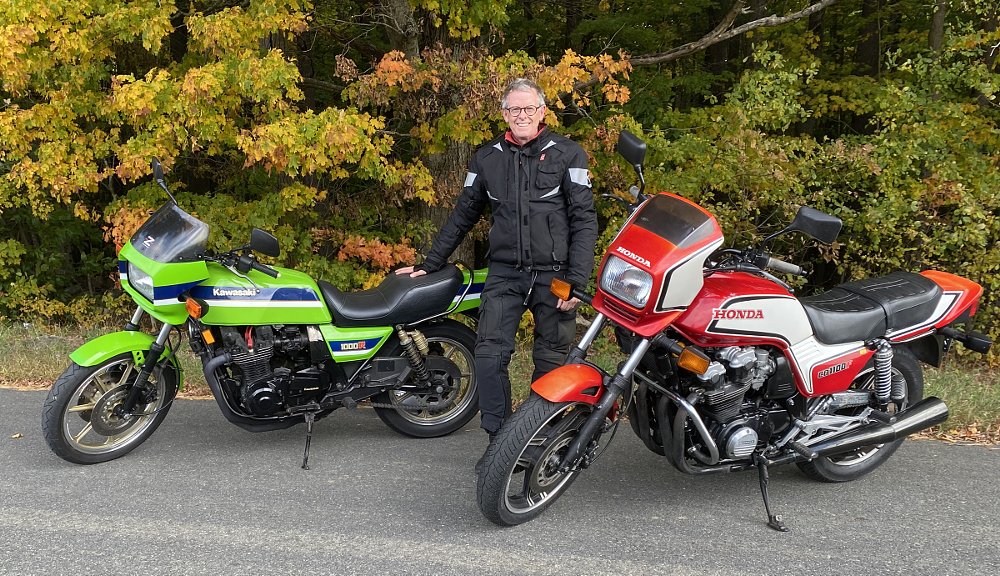
Now, though, 40 years later, I had the chance not just to ride one of them, but both, thanks to the generosity of Ken Condon, owner of Riding in the Zone riding instruction, author of books on riding technique, and former magazine columnist, who owns both of these classics. Not even the luckiest consumer in 1983 likely had that test ride opportunity. This comparison might be 40 years too late for my imaginary motorcycle shopper, but it's a fun exercise in historical research, so let's take a look at our two contestants.
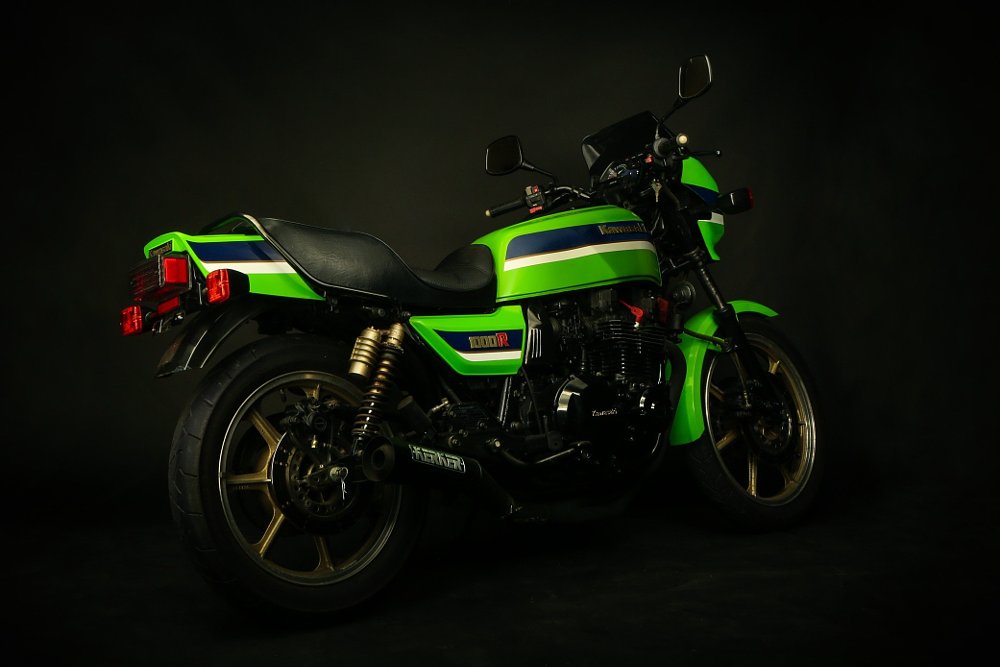
1983 Kawasaki KZ1000R
Despite Lawson winning the 1981 AMA Superbike championship on a Kawasaki, KZ1000s weren't moving out of showrooms nearly as fast as Eddie got around a race track. To celebrate Lawson's title and maybe bring some attention and excitement to the line, 750 Eddie Lawson Replica ZK1000Rs were built in 1982. The model came back in 1983, officially called the Superbike Replica, because by then Lawson was moving on to grand prix racing to ride for Yamaha after winning a second consecutive AMA title.
Though the Lawson replicas are valuable and highly coveted today, they didn't sell all that well at the time, for several reasons. For one thing, in 1983, Eddie Lawson was a two-time AMA Superbike champion but not yet a much more famous four-time world champ. The KZ1000R was mostly just the standard model with a few tweaks and some paint. The engine was still an air-cooled inline four with two valves per cylinder at a time when new technology was hitting the market. The same year, Superbike racing shifted to 750 cc bikes. The KZ1000R weighed 535 pounds and hit a top speed of 135 mph in the half mile when Cycle World tested it, but it cost $4,400, and for that price you could get better performance from Kawasaki's GPz1100. Many KZ1000Rs lingered too long in dealer showrooms. Some U.S. bikes were even bought up by fans in Japan, who shipped them back to their homeland.
But that was 40 years ago. Now, they are highly sought after and very rare. The story of Ken's particular model is a classic case of "ran when parked" mystery and "barn find" serendipity.
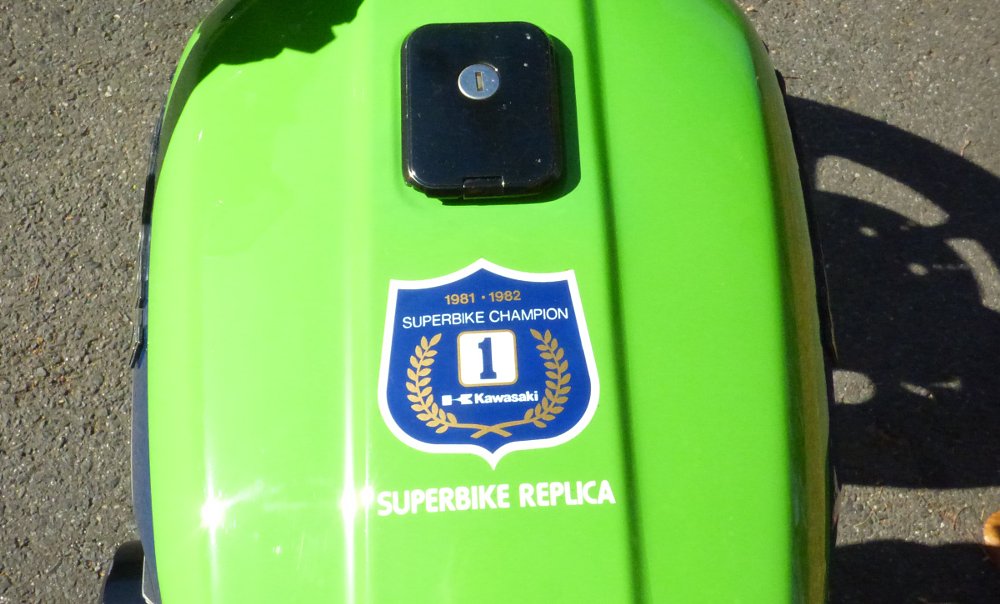
"It was a friend of a friend who owned it," Ken said. "So my friend called me and said 'My friend's got this bike in the garage that's been sitting there for 25 years. Maybe you'd know somebody who'd want it.' I get those calls or e-mails every day. Then he sent the photo and it was this. And I said, 'Oh! OK. You've got something here.'"
Ken told the owner his motorcycle was potentially worth significant money and sent him some resources about how he could put some work into it to get a better price. But the owner wasn't interested. "He just wanted it gone."
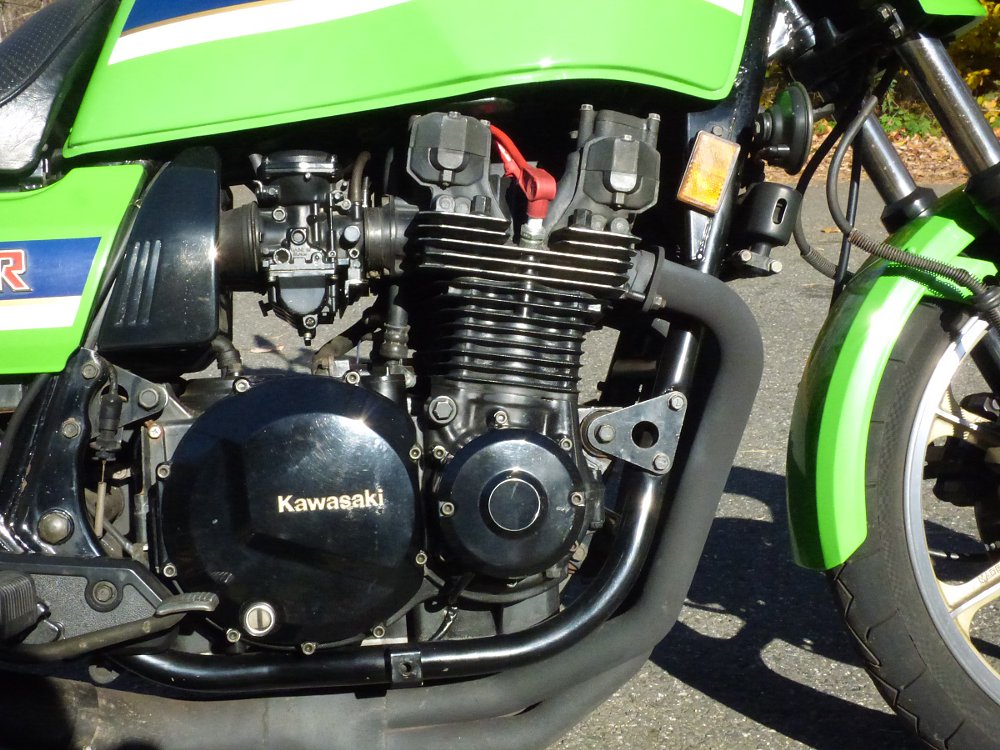
The owner said the gas tank hadn't been drained and he didn't know if the carbs had been drained before storage 25 years earlier, but probably not. "Right away you're thinking the carbs need rebuilt and maybe a new gas tank, because you don't know what's in there," Ken said. Upon inspection, though, the gas in the tank smelled OK and there was no bad rust in the tank. Surprisingly, the carbs had been drained. He offered $3,000 and the owner accepted.
"I didn't have to do as much to it as I thought," Ken said. "I had it running within a day."
He cleaned the carbs and the tank and although the compression was low, his mechanic advised him to run it a while before doing any top end work. The valves essentially lapped themselves in and compression came up to spec.
Over the winter, he removed the chipped and discolored clear coat on the tank, fixed a dent, touched up the paint, and applied new clearcoat. The Kerker exhaust was rusted and had to be repaired. It was meant to look like the race exhaust on Lawson's Superbike and though it came with the bike, for legal reasons it was not installed at the factory, but was put on by the dealer.
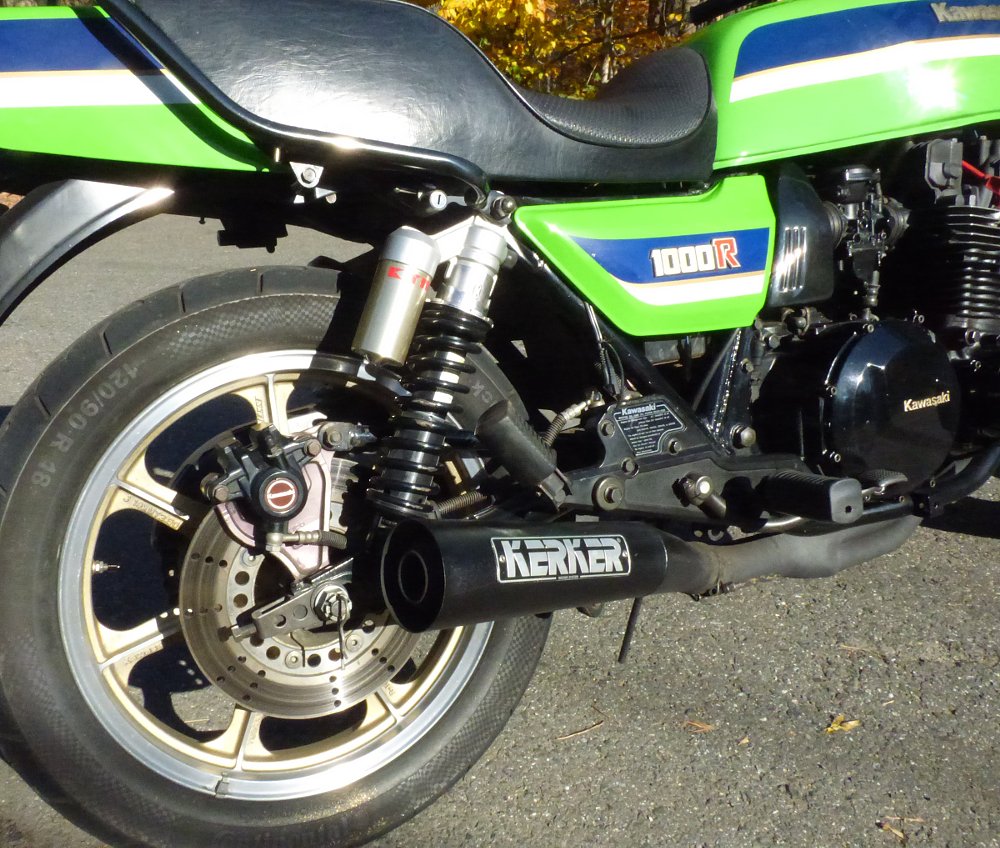
A set of shocks from a Kawasaki ZRX1200 (the similarly painted model that came almost 20 years later) are handling rear suspension duties until he can get the originals refurbished.
Ken's Kawasaki had 18,818 miles on it as it sat in his driveway before our ride. He said he's seen owners asking as much as $23,000 for one today. He doesn't appraise his nearly that highly, but it's still clear his investment was a good one, and not just for the joy it gives him when riding it.
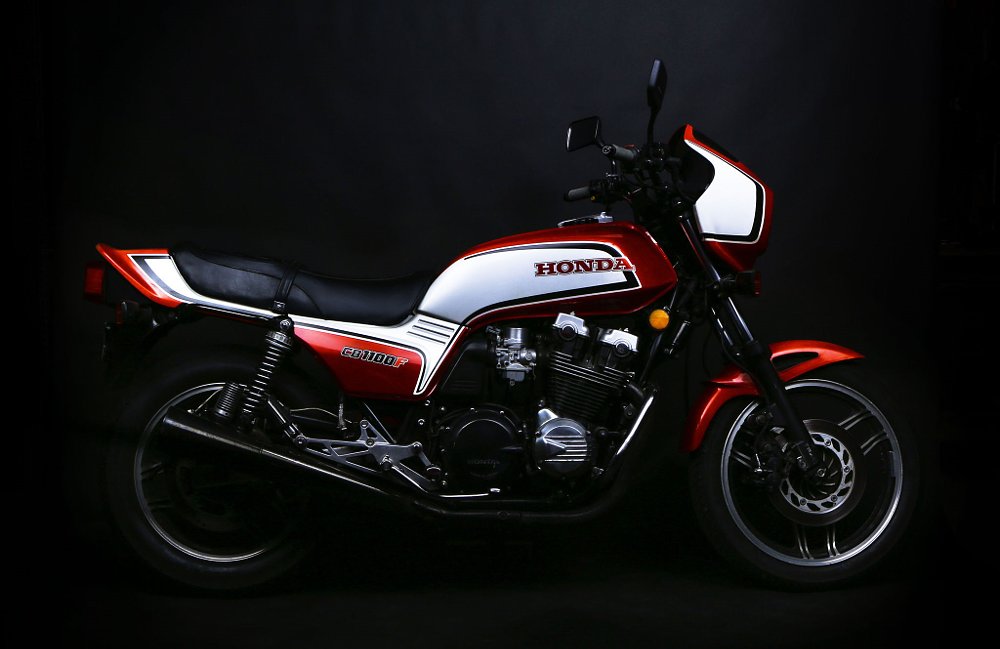
1983 Honda CB1100F
While the 1983 Honda CB1100F is not as rare or expensive or flashy as the Kawasaki on the other side of Ken's garage, it is still an uncommon and significant motorcycle. The CB1100F was only available for this one year in the United States. Honda boosted the size of the CB900F's engine up to 1,062 cc for the CB1100F, but that was far from the only change. In addition to addressing some mechanical problems on the old 900, Honda also put better Keihin carburetors in the new bike and made quite a few other changes to increase performance. The 18-inch front wheel was an inch smaller than the one on the 900 and was one of the first single-piece cast aluminum wheels used by Honda, instead of the riveted-together Comstar wheels of the time. The wheels were one of the changes credited by reviewers for improved handling. The CB1100F was more powerful than the CB900F but weighed about the same, at 567 pounds, according to Cycle World.
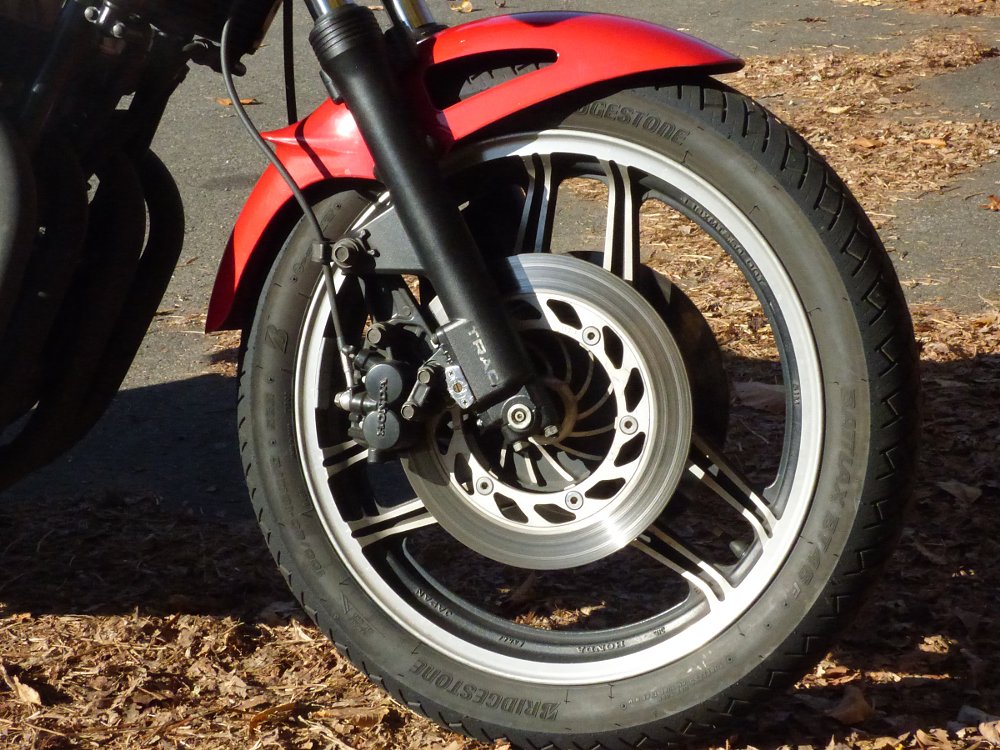
In a way, the CB1100F was the culmination of the classic, air-cooled, inline-four-cylinder engine in a sporting capacity. Also in 1983, Honda introduced the VF750F and the move to liquid cooling for performance bikes was on. But the CB1100F made its mark, even if it was short-lived. In Cycle World's test, the Honda reached 141 mph in the half-mile acceleration test, the fastest speed the magazine had ever recorded by a stock motorcycle at that time.
Though I wasn't looking at performance bikes in 1983, Ken, who's the same age as I am, was either more ambitious or better compensated at the time. In 1984, he bought a new, leftover 1982 CB900F, "and I loved it." Years later, he sold it around the time he bought his house. In recent years, he's watched for a CB1100F, the replacement for his long-lost 900.
Then last year, on the way home from a camping trip in Michigan, while stopped for the night in upstate New York and scrolling through used motorcycle listings, he saw this CB1100F for sale just half an hour away. He stopped to look at it. The old bike ran, though the clutch slipped. The signature red-and-white paint was faded. "All the red on the top was basically pinkish orange," he said. "I probably paid more than I should have for it."
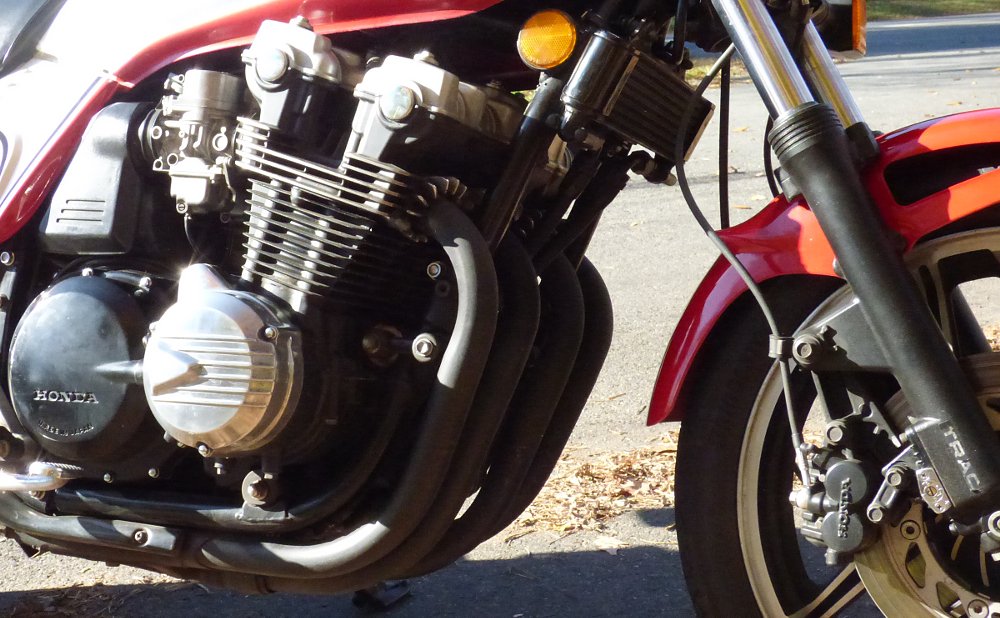
He adjusted one valve, replaced the clutch, rebuilt the brakes, fixed some issues with the cartridge emulators in the fork, and over the winter he repainted the faded portions. The rear shocks need rebuilt, though they work fine for the street, and Ken only felt they were an issue when he took the old Honda to the track for one of his Advanced Street Rider Training Days.
The day we were about to take our ride, the CB1100F had 40,071 miles on the odometer, a couple thousand more than when he bought it last year.
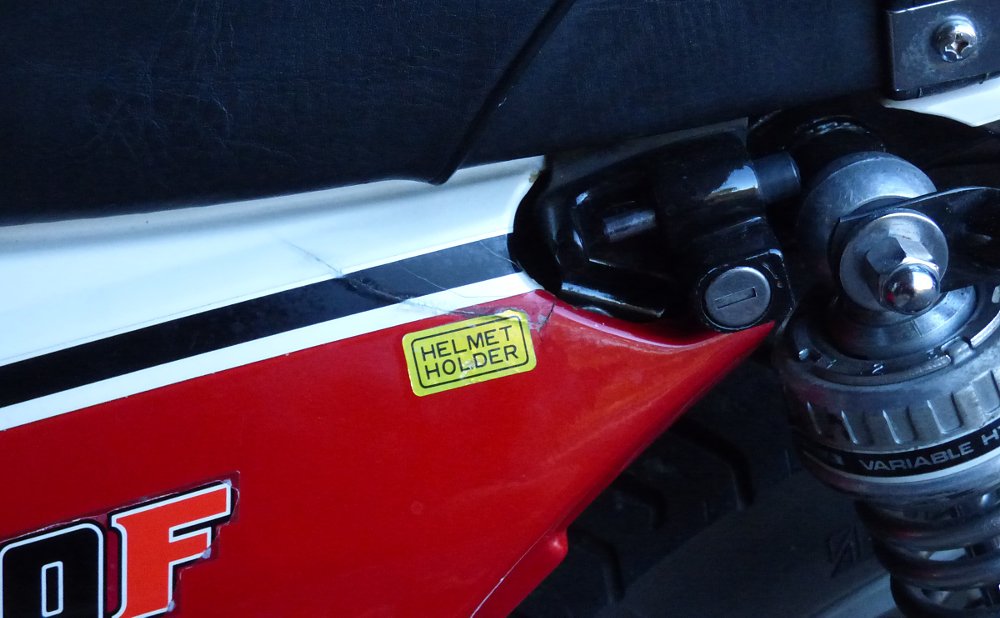
Riding the CB1100F and KZ1000R, 40 years later
Ken does all kinds of riding, from track days on his Aprilia RSV4 to ice racing on his Yamaha XT250 to Backcountry Discovery Routes on his Yamaha Ténéré 700. But the closest things he has to daily riders are these two antiques.
"When I want to go for a spin around the block, it's one of these bikes I take," he said.
A 40-year-old Superbike may not be the first motorcycle you'd think of as your daily rider, but these two actually fill the role pretty well. And while they look very similar, with air-cooled, inline-four engines, five-speed transmissions, and oil coolers that almost look interchangeable, they do have different personalities.
"When I really want a relaxed ride, I tend to choose the Honda," Ken said. "When I get on the Kawasaki, it reminds me of just how visceral it really is."
With a 40-year-old bike, there's always a process to startup from cold, so Ken applied just the right amount of choke, nursed the throttle, and let both bikes warm up a minute in the driveway. For our afternoon ride along the back roads near his home in Massachusetts, I started out on the Honda.
At nearly 570 pounds, the CB1100F is the heaviest motorcycle I've ridden this year, it occurred to me as we rode out the two-track driveway and onto the the paved roads. But that heavy metal lump of an engine felt centered and low enough that the weight wasn't noticeable, and agility was helped by the wide handlebar and the narrow tires that were the norm 40 years ago. As we veered down not-quite-two-lane roads through forests just hitting their full autumn blaze of color, the CB1100F never felt ponderous.
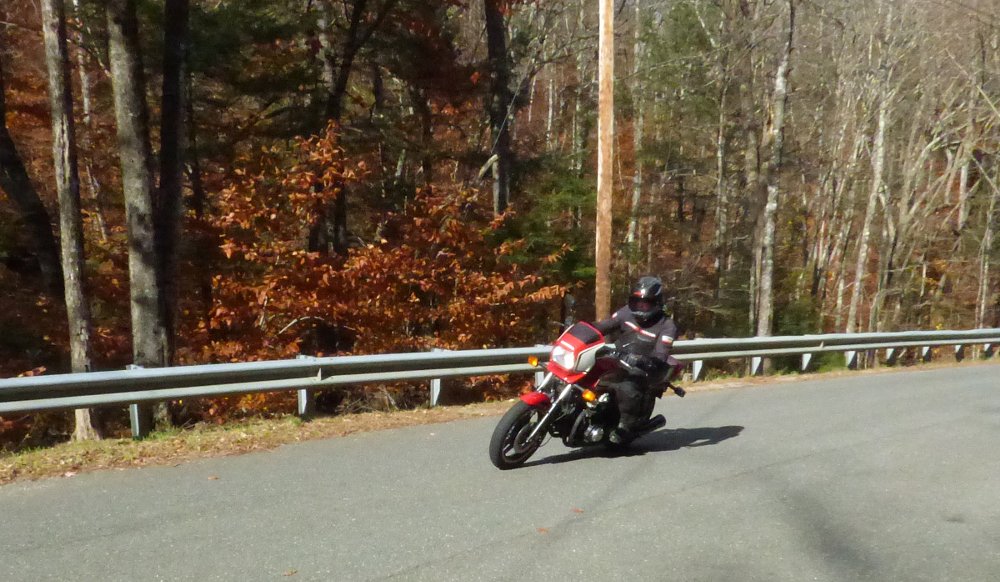
A shade over 100 horsepower is a good amount for a balanced street bike, plenty to move you down the road at a brisk pace and not enough to overwhelm. The Honda pulled with smooth torque. Ken used the old freight train analogy. Brakes, of course, are one area where big advances have happened in the last 40 years, but the CB's binders never made me nervous. The only thing that felt odd to me were the ergonomics. Expecting a neutral stance, I was surprised to find that footpegs felt oddly forward and the handlebar felt like the grips angled upward. It was a small thing, but it was one element that reminded me I was riding a motorcycle from another era, a time when things were done just a little differently.
After shooting some photos, we switched and I rode the Kawasaki.
"This bike, compared to the Honda, has a lot more character, I guess I'd say," Ken told me. "It's a little more raucous. Some of it comes from the sound, the snarl. It's more snappy."
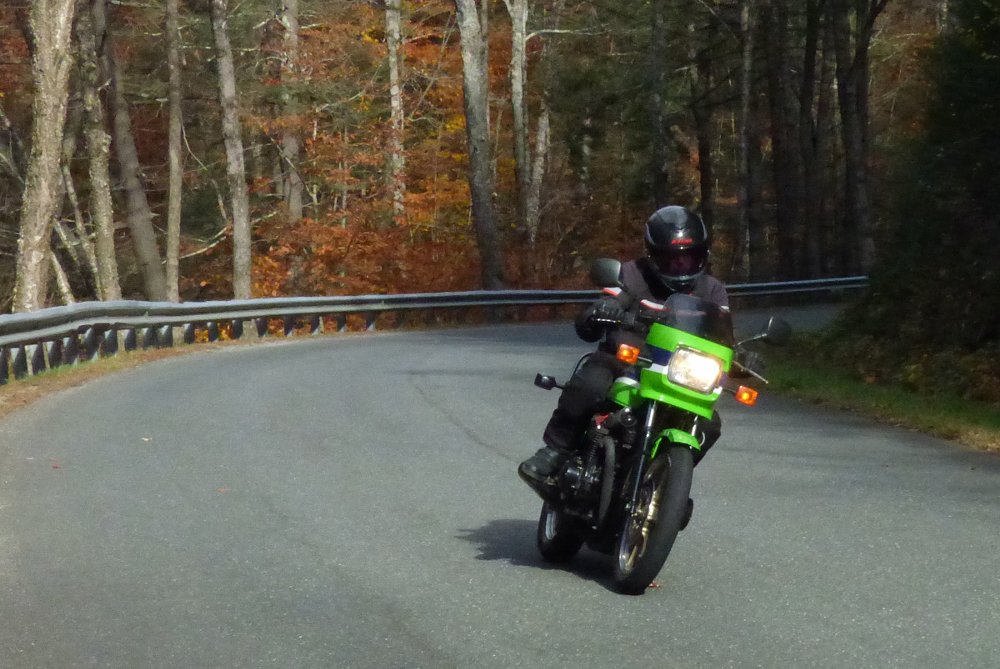
The KZ1000R's riding position felt more familiar, but the rest of the bike felt more like I was riding something from another era. The power delivery was not as steady and smooth as the Honda's and I missed a few shifts, when I didn't make a focused effort to be precise with the lever.
"I don't hesitate to clutchless upshift on the Honda but on the Kawasaki, it never feels quite as precise and I have had it pop out of gear, but only rarely," said Ken. "I think it's the nature of the bike. The Kawasakis were always known to be a little raspy and harder edged than the Hondas."
The Cycle World writers came up with a similar description in their test of the 1983 KZ1000R: "It is a hard edged, somewhat noisy, rough riding beast of a motorcycle, the kind of bike good racers are made of."
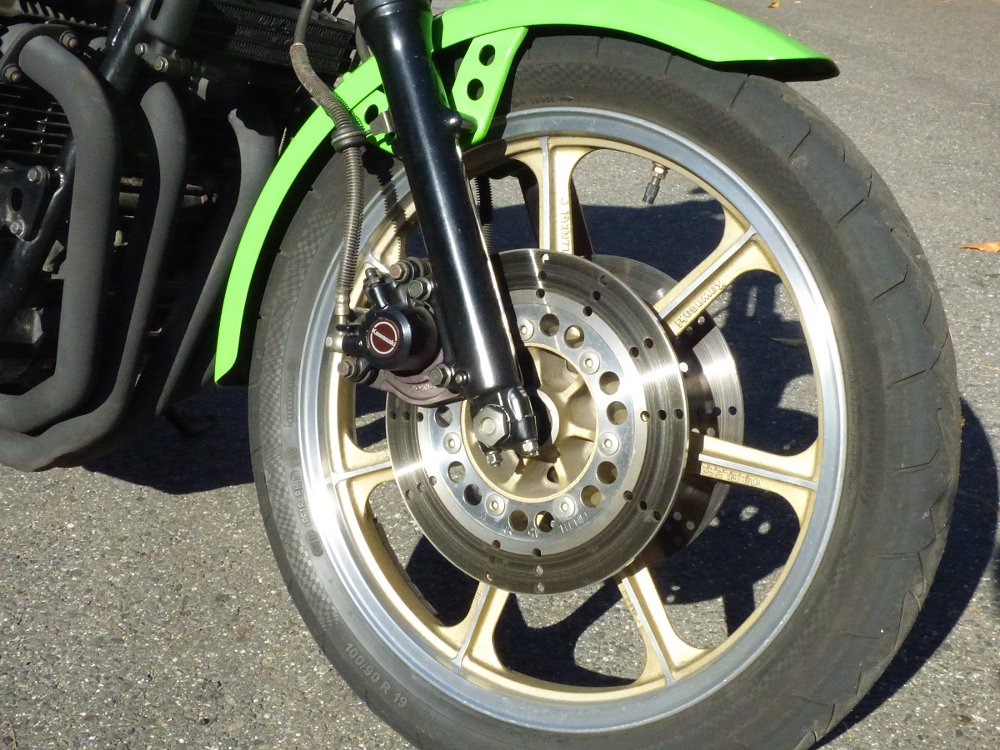
Considering its price, the competition (even within Kawasaki's lineup), the raucous nature, and the fact that Eddie Lawson was still a few years away from hitting his peak fame back when this bike was new, perhaps it's not so surprising after all that the Superbike Replicas didn't fly out of U.S. showrooms. None of that is meant to say that the Lawson bike was disappointing or lesser than the Honda. Rather, it's different. Ken said which one he rides may come down to the mood of the day. Seeking a more relaxed pace? Pick up the Honda's key. Feeling more sporty? Go for the green, white, and blue.
It's a good decision to have to make.
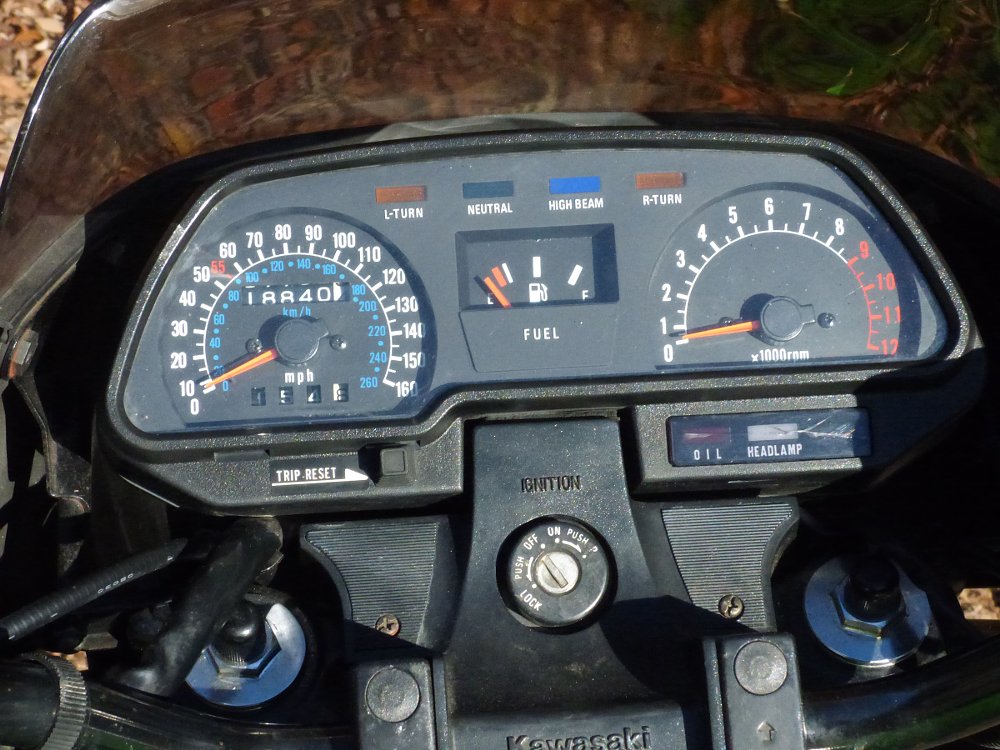
With his current personal collection of motorcycles, Ken has just about everything covered short of full-blown off-road racing or luxury touring. And two 40-year-old Superbikes is more vintage iron that most people own. So I asked if the lineup was all set or did he have another winter project in mind? He paused for a minute before answering.
"Somebody in Rhode Island is selling a Ducati 907ie, which is another bike I always had my eye on, and they're not asking a ton of money for it and it looks like it's all there. But..." — another pause — "where am I going to put it?"
We can relate.
















